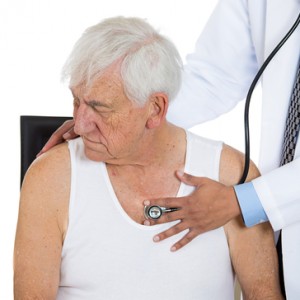 Researchers from the Cleveland Clinic have recently released results from a trial in which the late clinical outcomes in patients undergoing a minimally invasive valve procedure were assessed. The study entitled, “5-year outcomes of transcatheter aortic valve replacement compared with standard treatment for patients with inoperable aortic stenosis (PARTNER 1): a randomized controlled trial,” was published this week in The Lancet.
Researchers from the Cleveland Clinic have recently released results from a trial in which the late clinical outcomes in patients undergoing a minimally invasive valve procedure were assessed. The study entitled, “5-year outcomes of transcatheter aortic valve replacement compared with standard treatment for patients with inoperable aortic stenosis (PARTNER 1): a randomized controlled trial,” was published this week in The Lancet.
Background Terminology:
- Transcatheter Aortic Valve Replacement (TAVR): a minimally invasive procedure that allows doctors to treat patients with inoperable aortic stenosis (failing heart valves) in which a replacement valve is inserted by a catheter through the femoral artery without requiring open heart surgery.
- Echocardiography: is a test that uses sound waves to create pictures of the heart that does not expose the patient to radiation.
- New York Heart Association Functional Classification: a classification system for heart failure that places patients in one of four categories based on how limited they during physical activity.
The most common heart valve disease is aortic stenosis. The standard procedure to treat this condition is an invasive open heart procedure. For many patients such as the elderly, the risks involved in undergoing open heart surgery are too great to have the lifesaving procedure. TAVR was developed by Edwards Lifesciences, as an alternative to open heart surgery for those ineligible for the standard procedure.
This Study:
This study was the first to compare five-year TAVR outcomes with standard therapy. The investigators assessed trial data from 21 centers throughout Canada, Germany, and the USA. 358 patients (mean age of 83) were enrolled in which 179 were assigned to TAVR treatment (case) and 179 were assigned to standard treatment (control). The primary outcome measured was all-cause mortality at 1 year.
The following results were observed after five years:
- The risk of all-cause mortality at 5 years was 71.8% in the TAVR group versus 93.6% in the standard treatment group.
- At the five-year mark, 28.2 percent of the TAVR group were still alive, compared to only 6.4 percent of those undergoing standard therapy.
- Echocardiography after TAVR showed durable vascular benefit with no evidence of structural valve deterioration.
- At 5 years, 42 (86%) of 49 survivors in the TAVR group had New York Heart Association class 1 or 2 symptoms compared with three (60%) of five in the standard treatment group.
These findings support previous evidence that patients undergoing the TAVR procedure lived longer, with better symptom management, fewer hospital readmissions and better functional status.
In a press release about the studies important findings, Dr. Samir Kapadia, M.D., director of the Sones Cardiac Catheterization and lead study author, “This trial is the first and will probably be the only–randomized aortic stenosis trial that includes a group of patients not treated with aortic valve replacement, since these results will make it unethical to treat severe aortic stenosis patients with medical therapy alone.”
For patients who are not suitable candidates to undergo an invasive repair procedure, this study adds to the body of knowledge that gives evidence to the successful outcomes associated with the TAVR procedure and that it should be strongly considered as a treatment option by their healthcare providers.
About Edwards Lifesciences
Edwards Lifesciences is a global leader in the science of pericardial tissue heart valves and hemodynamic monitoring. The company partners with physicians to produce innovative medical technology solutions designed to help patients live longer, healthier and more productive lives. Edwards’ technologies address large and growing patient populations in which there are significant unmet clinical needs, such as structural heart disease and advanced monitoring of the acutely ill. Each of their product areas has a rich history and unique patient focus.


